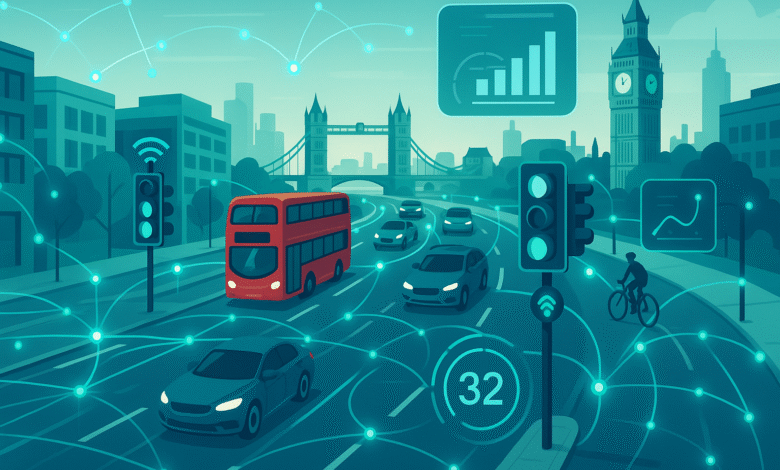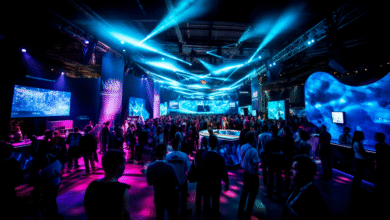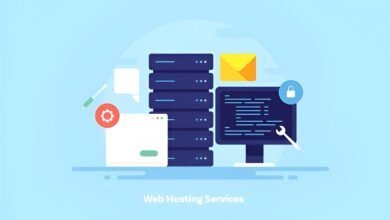
London’s bustling streets handle millions of vehicles daily, creating one of the world’s most complex traffic challenges. As the capital city embraces digital transformation, smart city infrastructure powered by Internet of Things (IoT) sensors is revolutionizing how traffic flows through its historic roads. This technological evolution represents a fundamental shift from traditional traffic management to intelligent, data-driven systems that respond in real-time to changing conditions.
The integration of IoT technology into London’s transportation network demonstrates how modern cities can leverage connected devices to create more efficient, sustainable, and livable urban environments. From reducing congestion to improving air quality, these smart systems are reshaping the daily commute for millions of Londoners while setting global standards for urban mobility solutions.
Understanding Smart City Infrastructure
Smart city infrastructure encompasses the digital backbone that connects various urban systems through advanced technology. At its core, this infrastructure relies on interconnected sensors, communication networks, and data analytics platforms that work together to optimize city operations. Unlike traditional urban planning approaches that relied on static systems and periodic assessments, smart infrastructure continuously monitors, analyzes, and responds to real-time conditions.
The foundation of any smart city lies in its ability to collect, process, and act upon vast amounts of data generated by urban activities. This data-driven approach enables city planners and traffic managers to make informed decisions based on actual usage patterns rather than assumptions or outdated information. The result is more responsive, efficient, and citizen-centric urban services.
In London’s context, smart city infrastructure has become essential for managing the unique challenges of a historic city adapting to modern transportation needs. The city’s medieval street layout, combined with contemporary traffic volumes, requires sophisticated technological solutions that can optimize traffic flow while preserving the character and functionality of existing infrastructure.
The Role of IoT Sensors in Modern Traffic Management
IoT sensors serve as the eyes and ears of modern traffic management systems, providing continuous streams of data about vehicle movement, pedestrian activity, environmental conditions, and infrastructure status. These small, connected devices can detect everything from vehicle speed and volume to air quality levels and road surface conditions, creating a comprehensive picture of urban mobility patterns.
The beauty of IoT sensor networks lies in their ability to communicate with each other and central management systems, creating an interconnected web of information that enables coordinated responses to traffic situations. When a sensor detects unusual congestion on one route, the system can automatically adjust traffic signals on alternative routes to redistribute flow more effectively.
Modern IoT sensors used in traffic management include vehicle detection sensors, environmental monitoring devices, pedestrian counting systems, and infrastructure monitoring equipment. Each type of sensor contributes specific data points that, when combined, provide traffic managers with unprecedented visibility into how people and vehicles move through the urban environment.
The wireless connectivity of these sensors means they can be deployed relatively quickly and cost-effectively compared to traditional wired infrastructure. This flexibility allows cities to expand their monitoring capabilities incrementally, focusing resources on high-priority areas while gradually building comprehensive coverage across the entire transportation network.
London’s Current Traffic Challenges
London faces unique traffic management challenges that stem from its position as both a historic city and a modern global financial center. The city’s road network, much of which dates back centuries, was never designed to handle the volume and variety of modern transportation modes. This creates daily bottlenecks that affect not only vehicle traffic but also public transportation, cycling infrastructure, and pedestrian movement.
Peak hour congestion in London costs the economy billions of pounds annually through lost productivity, increased fuel consumption, and delayed deliveries. The city’s complex geography, with the Thames creating natural bottlenecks at bridge crossings, compounds these challenges by limiting alternative route options during peak periods.
Air quality concerns add another layer of complexity to traffic management decisions. London has struggled with air pollution levels that exceed European Union standards, making it essential to balance traffic flow optimization with environmental protection goals. This dual challenge requires sophisticated management approaches that can reduce both congestion and emissions simultaneously.
The diverse needs of different road users further complicate traffic management in London. The city must accommodate everything from delivery trucks and buses to cyclists and pedestrians, each with different space requirements, speeds, and safety considerations. Traditional traffic management systems struggled to balance these competing needs effectively, often favoring one mode of transportation at the expense of others.
How IoT Sensors Monitor London Traffic
London’s IoT sensor network employs multiple types of detection technology to create a comprehensive traffic monitoring system. Inductive loop sensors embedded in road surfaces detect the presence and movement of vehicles, while magnetic sensors can differentiate between different types of vehicles based on their metallic signatures. Video-based sensors use computer vision technology to analyze traffic patterns and detect incidents in real-time.
Acoustic sensors complement visual monitoring by detecting unusual sounds that might indicate accidents, emergency vehicles, or mechanical problems. These sensors can distinguish between normal traffic noise and anomalous sounds that require investigation, enabling faster response times to incidents that could disrupt traffic flow.
Environmental sensors integrated into the traffic monitoring network track air quality, noise levels, and weather conditions that affect driving behavior and traffic management decisions. This environmental data helps traffic managers understand when conditions might lead to increased congestion or safety risks, allowing for proactive rather than reactive management approaches.
The sensor network operates continuously, generating thousands of data points every minute across London’s road network. This constant stream of information enables traffic management systems to detect patterns, identify trends, and predict potential problems before they become serious disruptions to urban mobility.
Also Read: The Role of IoT in the Future of UK Transport and Smart Cities
Real-Time Traffic Optimization Systems
Real-time traffic optimization represents one of the most visible applications of smart city infrastructure in London. The city’s adaptive traffic signal control systems use data from IoT sensors to adjust signal timing dynamically based on current traffic conditions rather than following predetermined schedules.
These intelligent systems can extend green lights for directions experiencing heavy traffic while reducing wait times for lighter traffic flows. During special events or incidents, the system can implement coordinated signal changes across multiple intersections to maintain traffic flow and prevent cascading congestion throughout the network.
Machine learning algorithms analyze historical traffic patterns alongside real-time sensor data to predict traffic conditions and optimize signal timing proactively. This predictive capability allows the system to make adjustments before congestion occurs, rather than simply reacting to problems after they develop.
The integration of public transportation data into traffic optimization systems enables coordinated management that gives priority to buses and other public transport vehicles. This integration supports London’s broader transportation policy goals of encouraging public transit use while maintaining efficient flow for all road users.
Data Analytics and Traffic Pattern Recognition
Advanced data analytics platforms process the enormous volumes of information generated by London’s IoT sensor network, identifying patterns and trends that human analysts might miss. These systems can recognize recurring congestion patterns, seasonal traffic variations, and the impact of weather conditions on traffic behavior.
Pattern recognition algorithms identify unusual traffic situations that might indicate accidents, road closures, or special events affecting normal traffic flow. By detecting these anomalies quickly, traffic managers can implement appropriate response measures to minimize their impact on the broader transportation network.
Predictive analytics capabilities allow traffic management systems to forecast traffic conditions hours or even days in advance, enabling proactive planning for maintenance activities, special events, and other activities that might affect traffic flow. This predictive capability supports more effective resource allocation and better coordination between different city departments.
The insights generated by data analytics also inform long-term planning decisions about infrastructure investments, policy changes, and transportation system improvements. By understanding how traffic patterns evolve over time, city planners can make more informed decisions about where to focus resources for maximum impact on urban mobility.
Environmental Impact and Sustainability
Smart city infrastructure contributes significantly to London’s environmental sustainability goals by optimizing traffic flow to reduce fuel consumption and emissions. Improved traffic management reduces the time vehicles spend idling in congestion, directly decreasing air pollution and greenhouse gas emissions from transportation activities.
IoT sensors monitor air quality in real-time, providing data that helps traffic managers understand the immediate environmental impact of their decisions. When air quality reaches concerning levels, the system can implement measures to reduce traffic volume in affected areas or redirect traffic to less environmentally sensitive routes.
The integration of electric vehicle charging infrastructure into smart city systems supports London’s transition to cleaner transportation technologies. IoT sensors monitor charging station usage and availability, helping drivers locate available charging points and enabling efficient management of electrical grid resources.
Noise pollution monitoring through acoustic sensors helps balance traffic flow optimization with quality of life considerations for residents. The system can implement quieter routing options during nighttime hours or in residential areas, demonstrating how smart infrastructure can address multiple environmental concerns simultaneously.
Integration with Public Transportation
London’s smart city infrastructure integrates seamlessly with the city’s extensive public transportation network, creating coordinated mobility solutions that benefit all travelers. IoT sensors at bus stops monitor passenger waiting times and vehicle arrivals, providing real-time information that helps people make informed travel decisions.
Traffic signal systems give priority to public transportation vehicles when they are running behind schedule, helping maintain reliable service while minimizing the impact on other traffic. This integration supports London’s policy goals of encouraging public transit use as an alternative to private vehicle ownership.
Real-time passenger information systems use sensor data to provide accurate arrival predictions and service updates across multiple transportation modes. This integrated information helps travelers choose the most efficient combination of transportation options for their specific journey needs.
The coordination between traffic management and public transportation systems enables more effective response to service disruptions, with traffic signals and route recommendations automatically adjusting when underground services are interrupted or bus routes experience delays.
Benefits for Citizens and Businesses
The implementation of smart city infrastructure through IoT sensors delivers tangible benefits to London’s residents and businesses through reduced travel times, improved reliability, and enhanced safety. Commuters experience more predictable journey times as traffic management systems work continuously to prevent and resolve congestion before it significantly impacts travel.
Businesses benefit from more reliable delivery schedules and reduced transportation costs as optimized traffic flow decreases fuel consumption and vehicle wear. The improved efficiency of goods movement supports London’s economy by reducing the cost of doing business and improving competitiveness.
Emergency services experience faster response times as traffic management systems can clear routes dynamically and provide real-time information about the quickest paths to incident locations. This capability can literally save lives by reducing the time needed to reach people in emergency situations.
The environmental benefits of reduced emissions and noise pollution contribute to improved quality of life for London residents, while the data generated by smart infrastructure systems supports evidence-based decision making about future transportation investments and policy changes.
Future Developments and Innovations
London’s smart city infrastructure continues to evolve with emerging technologies that promise even greater improvements in traffic management and urban mobility. Artificial intelligence and machine learning capabilities are becoming more sophisticated, enabling more accurate predictions and more effective optimization strategies.
The integration of connected and autonomous vehicle technologies into existing smart infrastructure will create new opportunities for coordinated traffic management that can optimize individual vehicle routes in real-time while maintaining system-wide efficiency.
5G communication networks will enable faster data transmission and more responsive traffic management systems, while edge computing capabilities will allow more processing to occur locally, reducing latency and improving system reliability.
The expansion of sensor networks to include more detailed monitoring of pedestrian and cycling activity will enable more comprehensive transportation planning that better serves all modes of urban mobility, supporting London’s goals of becoming a more walkable and cyclable city.
Challenges and Limitations
Despite its many benefits, the implementation of smart city infrastructure faces several challenges that must be addressed to maximize its effectiveness. Privacy concerns about data collection and usage require careful attention to ensure that citizen rights are protected while still enabling effective traffic management.
The cost of implementing and maintaining comprehensive IoT sensor networks represents a significant investment that must be balanced against available public resources and competing priorities for infrastructure spending. Cities must develop sustainable funding models that support long-term system operation and regular technology updates.
Cybersecurity risks associated with connected infrastructure systems require robust protection measures to prevent malicious attacks that could disrupt traffic management or compromise sensitive data. The interconnected nature of smart city systems means that security vulnerabilities in one component could affect the entire network.
Technical challenges related to sensor reliability, data quality, and system integration continue to require ongoing attention and investment in maintenance and upgrades. Weather conditions, vandalism, and normal wear and tear can affect sensor performance, requiring systematic monitoring and replacement programs.
Conclusion
London’s implementation of smart city infrastructure through IoT sensors represents a fundamental transformation in how urban transportation systems operate and serve citizens. The integration of real-time monitoring, data analytics, and adaptive management systems has created a more responsive, efficient, and sustainable approach to traffic management that benefits all road users.
The success of London’s smart infrastructure initiatives demonstrates the potential for technology to address complex urban challenges while improving quality of life for residents and supporting economic activity. As these systems continue to evolve and expand, they will play an increasingly important role in creating more livable, sustainable, and efficient cities.
The lessons learned from London’s experience with smart city infrastructure provide valuable insights for other cities considering similar investments in IoT-enabled traffic management systems. The combination of technical innovation, policy support, and citizen engagement that has characterized London’s approach offers a model for urban transformation that balances technological capability with human needs and environmental sustainability.
Looking forward, the continued development of smart city infrastructure will depend on ongoing collaboration between technology providers, city officials, and citizens to ensure that these systems serve the broader goals of urban livability, economic prosperity, and environmental sustainability. The future of urban mobility lies in the intelligent integration of technology with thoughtful planning and policy development that puts people at the center of smart city design.







